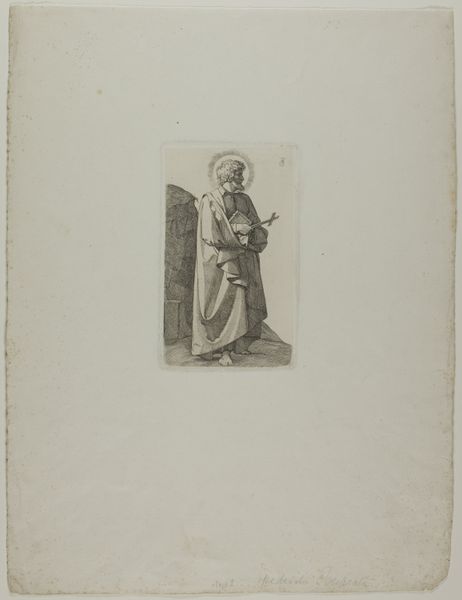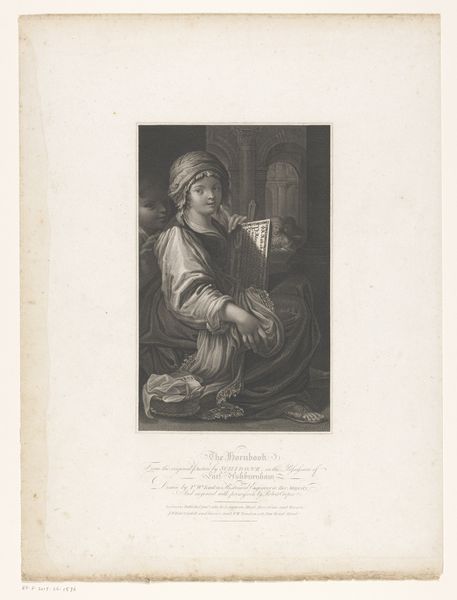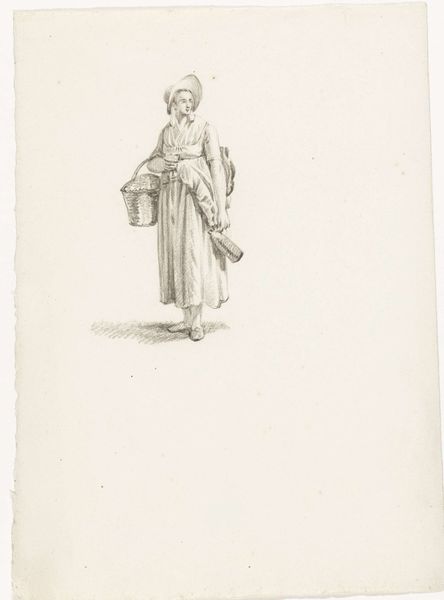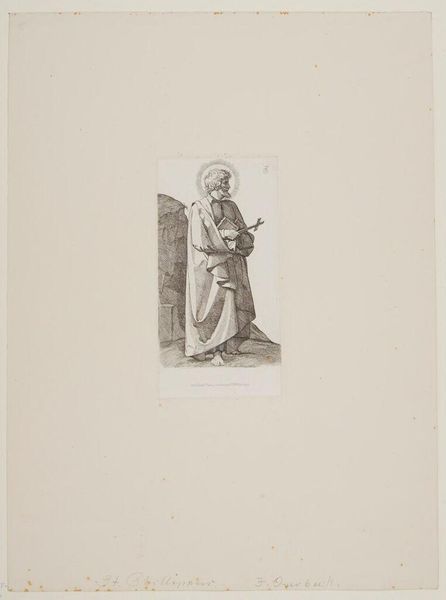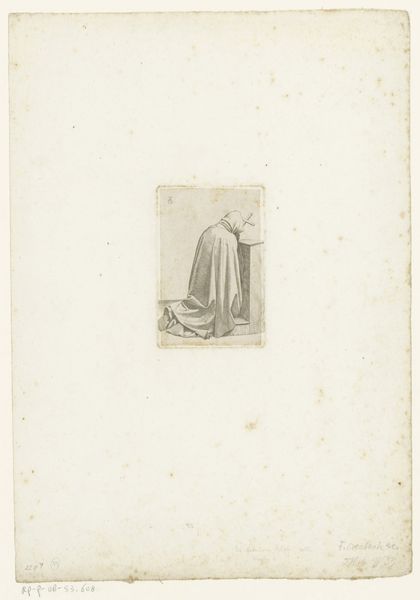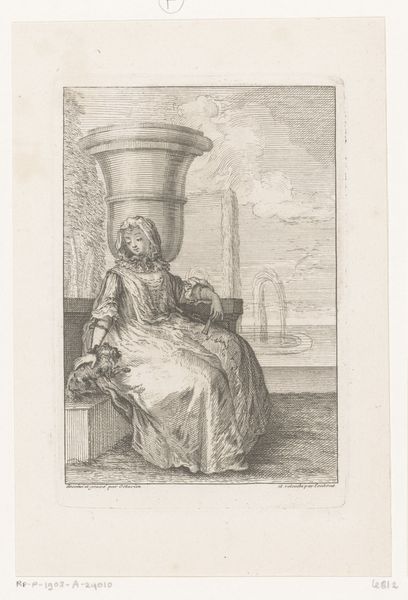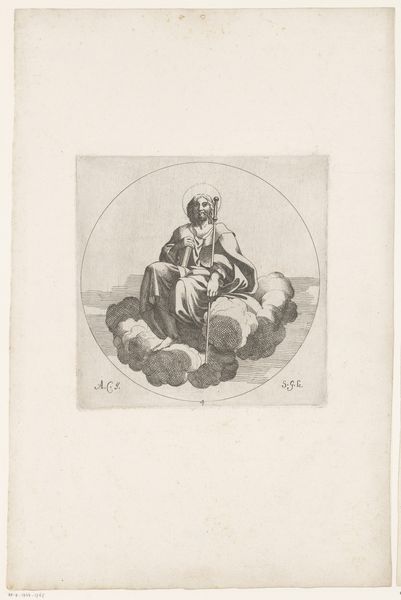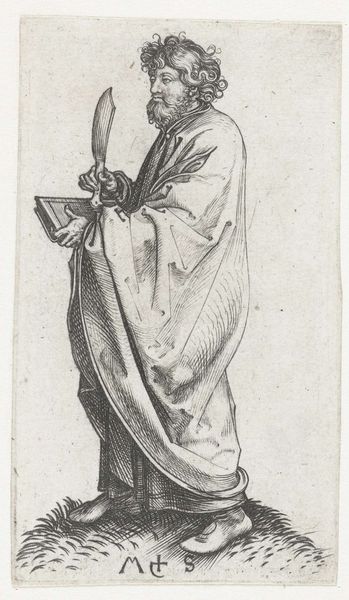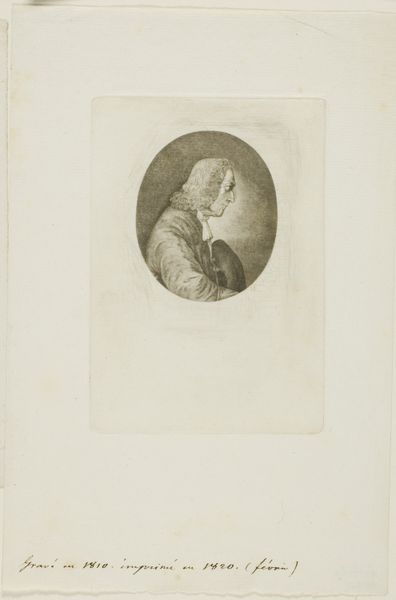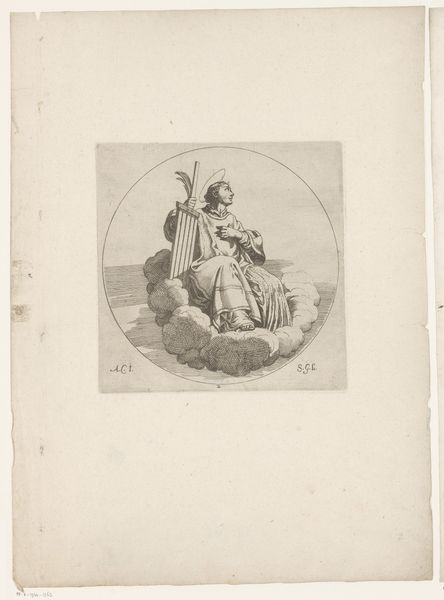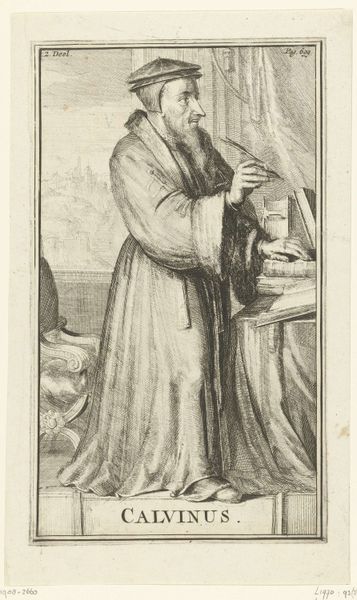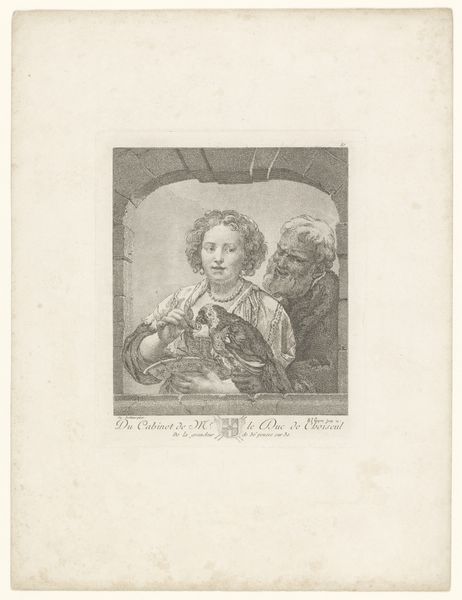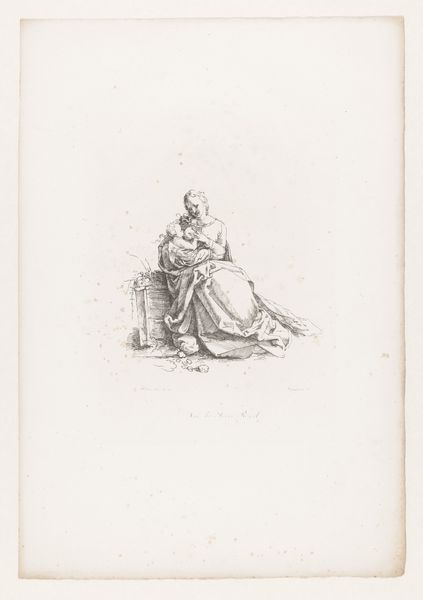
drawing, paper, engraving
#
portrait
#
drawing
#
old engraving style
#
paper
#
cross
#
academic-art
#
engraving
Dimensions: height 140 mm, width 84 mm
Copyright: Rijks Museum: Open Domain
Curator: Here we have Johann Friedrich Overbeck's "Apostel Filippus," an engraving on paper created sometime between 1799 and 1869. Editor: It's strikingly spare. The lines are delicate, almost ethereal. The composition feels classical, yet there's a rawness in the figure's expression. Curator: Yes, Overbeck was deeply involved in the Nazarene movement, which sought to revive spiritual values in art by looking to pre-Renaissance masters like Raphael and Dürer. He wanted to create artworks that instilled Christian values. Think about how he portrays Phillip, not just as a figure but an ideal. The cross, the halo – are clear markers of spiritual importance. Editor: The process of engraving is key here. Consider the labor involved in creating such detail with metal tools, carefully carving lines to produce shadows and depth on the paper. It’s fascinating how a reproducible medium, meant for wider consumption, is used to convey such seemingly exclusive spiritual sentiment. How many prints were created, who owned them and the materiality of the printmaking itself. Curator: That tension between mass production and high art is definitely at play. Overbeck navigated a complex world of artistic tradition, religion, and emerging industrial capabilities. Also, notice how Phillip’s robes and his positioning signal not just faith but perhaps, a kind of righteous struggle given Overbeck’s broader politics, he probably felt this type of engraving had an impact as much or even more than paintings Editor: Absolutely, and by connecting the production process to religious and societal contexts, we can look beyond surface representation and understand how these prints functioned in the artist’s time. Curator: Exactly. For me, "Apostel Filippus" becomes a mirror reflecting not just the artist’s faith, but also the turbulent intersection of religion, politics, and artistic identity in 19th century Germany. Editor: I’ll remember the print as an example of how laborious and skilled craftsmanship was used to make artwork that could be both about the spiritual and for a growing public.
Comments
No comments
Be the first to comment and join the conversation on the ultimate creative platform.
